Expert Shed Slab Contractors Serving Maryborough and Fraser Coast
We’ve been pouring shed slabs across Maryborough, Tinana, Torbanlea, and throughout the Fraser Coast region for years. Local knowledge makes a real difference when you’re working with our soil types and weather patterns.
Every area around Maryborough has different ground conditions. Sandy soils near the coast behave differently from clay soils inland. We know which areas need extra base preparation, where drainage is critical, and how to handle reactive soils that move with moisture changes.
Fraser Coast weather affects concrete work. Our wet season timing, humidity levels, and temperature ranges all impact how we schedule pours and manage curing. We work with these conditions, not against them.
Rural properties, residential blocks, commercial sites – we’ve done shed slabs on all of them. Farm equipment storage out in Tinana, backyard workshops in town, and commercial warehouses in the industrial areas. Different sites need different approaches, and we know what works where.

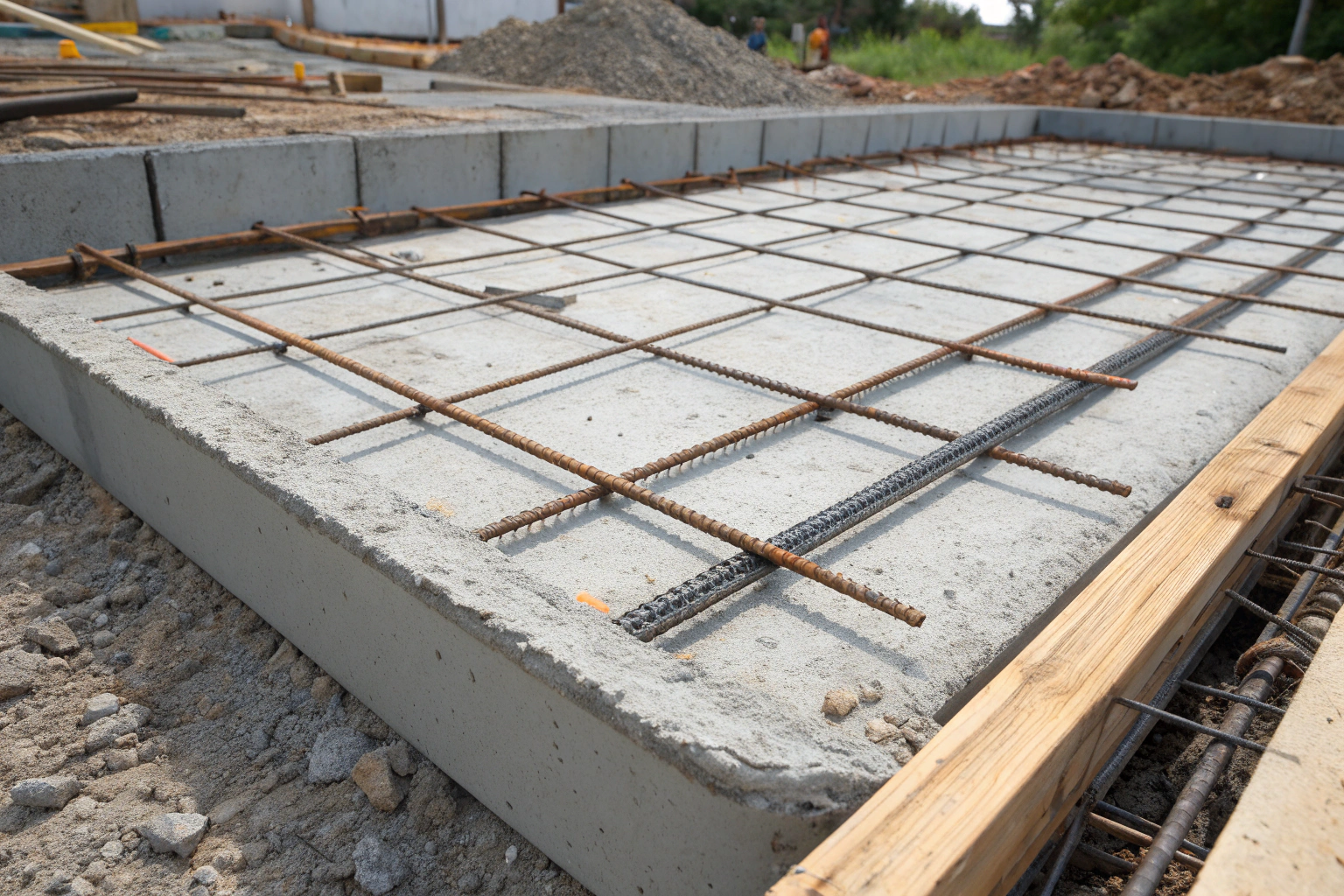
Shed Slab Reinforcement
Reinforcement’s what stops your concrete from cracking and failing under load. Without proper reinforcement, even thick concrete will crack – the steel mesh or rebar inside is what gives your slab its strength and durability.
Standard mesh reinforcement works fine for basic residential sheds storing garden equipment and tools. We typically use SL72 mesh for these lighter applications. It’s cost-effective and does the job for sheds that aren’t coping with heavy loads.
Heavy-duty reinforcement becomes necessary when you’re parking machinery, vehicles, or storing significant weight. Farm equipment, loaded shelving systems, workshop machinery – these need heavier gauge mesh or even steel rebar, depending on the point loads involved.
The reinforcement needs to be positioned correctly during the pour. It sits in the middle third of your slab thickness, not on the bottom. Bar chairs hold it at the right height so it’s actually doing its job when the concrete’s poured.
Around Maryborough, we also factor in cyclone tie-down requirements. The reinforcement pattern needs to work with your shed’s anchor points to create a complete structural system that’ll handle wind loads.
Size and Load Considerations
Sizing your shed slab properly matters more than most people realise. Too small and you’re boxed in. Too big, and you’re spending money you didn’t need to spend.
Standard shed dimensions we see most often are 6×9 meters for residential, 9×12 meters for larger storage needs, and 12×15 meters or bigger for rural and commercial applications. These sizes work well with standard shed kit dimensions and give you room to move. Custom sizing comes up when you’ve got specific requirements. Odd-shaped properties, existing structures to work around, or just unique storage needs – we can pour whatever dimensions make sense for your situation.
Heavy machinery load calculations aren’t guesswork. We need to know what’s going on with the slab and where. Point loads from machinery feet are different from distributed loads from vehicles. Get this wrong and you’ll see cracks within months. Vehicle access and turning circles need planning before we pour. If you’re backing trailers or turning equipment around inside, we need adequate space and possibly reinforcement in high-traffic areas.
Future expansion planning saves money down the track. Maybe you only need one bay now, but you’re thinking about expanding later. We can pour the slab to accommodate future additions without having to redo the whole thing. Multi-bay configurations work well for equipment storage or commercial use. Separate bays for different purposes, all on one continuous slab with proper control joints to manage any movement.
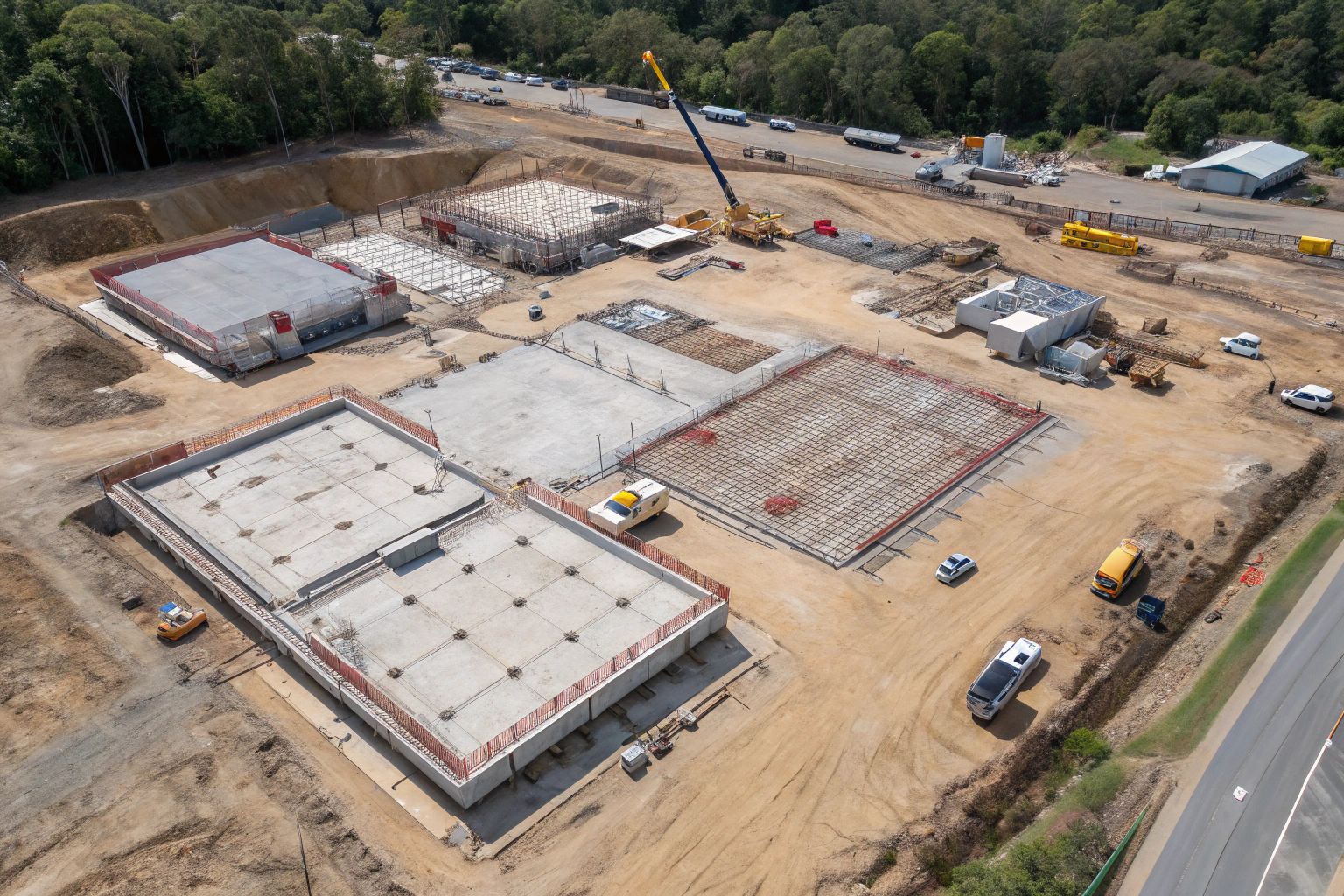
Types of Shed Slabs We Pour
Different sheds need different approaches. A garden tool shed’s got completely different requirements than a machinery storage building. We handle residential backyard projects, rural farm buildings, commercial warehouses, and everything in between. The size, reinforcement, and site preparation all change depending on what you’re storing and how you’ll be using the space. Here’s what we pour around Maryborough:
🔵 Rural farm shed foundations
🔵 Residential backyard shed slabs
🔵 Workshop and hobby shed bases
🔵 Carport and garage slabs
🔵 Storage shed foundations
🔵 Commercial warehouse slabs
🔵 Equipment shed bases
🔵 Machinery storage buildings
🔵 Boat and caravan storage slabs
🔵 Garden tool shed bases
🔵 Rural property outbuildings
🔵 Industrial storage facilities
🔵 Agricultural equipment sheds
🔵 Home workshop foundations
🔵 Multi-purpose shed slabs
Preventing Cracks in Your Shed Slab
Cracks happen when something’s wrong with the base preparation, the concrete mix, or the curing process. Proper site preparation prevents most cracking issues before we even pour.
A compacted base material that’s stable and level means your slab’s got solid support underneath. Skip this step or rush it, and settlement cracks show up within months.
Control joints manage where cracks occur if they’re gonna happen. We cut or form joints at strategic points so any cracking happens there instead of randomly across your slab.
Correct concrete mix design for Fraser Coast conditions matters. Too much water weakens the concrete. Wrong aggregate size causes problems. We spec the mix properly for local conditions.
Curing protection stops the concrete from drying too fast. Rapid moisture loss causes surface cracks. We protect fresh concrete so it reaches full strength properly.
Finish Options for Your Slab
The surface finish affects both how your slab performs and how it looks. Different finishes suit different purposes – some prioritise slip resistance, others focus on easy cleaning or appearance. We’ll recommend what works best for your intended use.
Smooth Trowel Finish
Clean, flat surface that works well for workshops where you’re rolling equipment around or want easy cleaning. Good for indoor storage areas and spaces where you need a level floor without texture. Popular choice for residential sheds.
Broom Textured Surface
Provides slip resistance, which matters when you’re driving vehicles on and off the slab or working in wet conditions. The texture helps with traction but isn’t so rough that it’s hard to sweep clean. Standard for most outdoor applications.
Exposed Aggregate Finish
Attractive, durable surface that hides marks and wear better than smooth concrete. Costs more but looks good if your shed’s visible from the house or street. The exposed stone creates natural texture and visual interest.
A selection of our Shed Slabs Projects
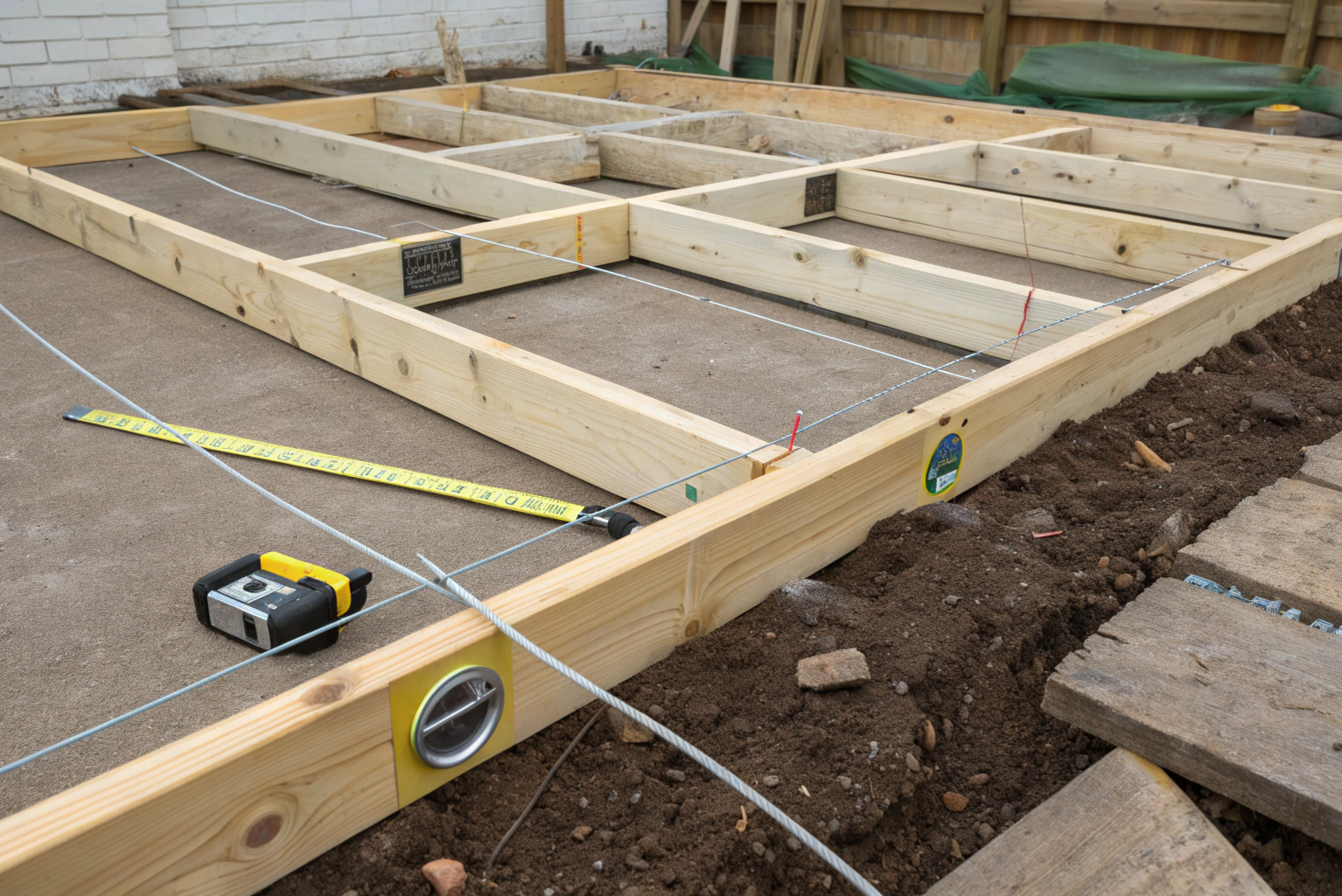

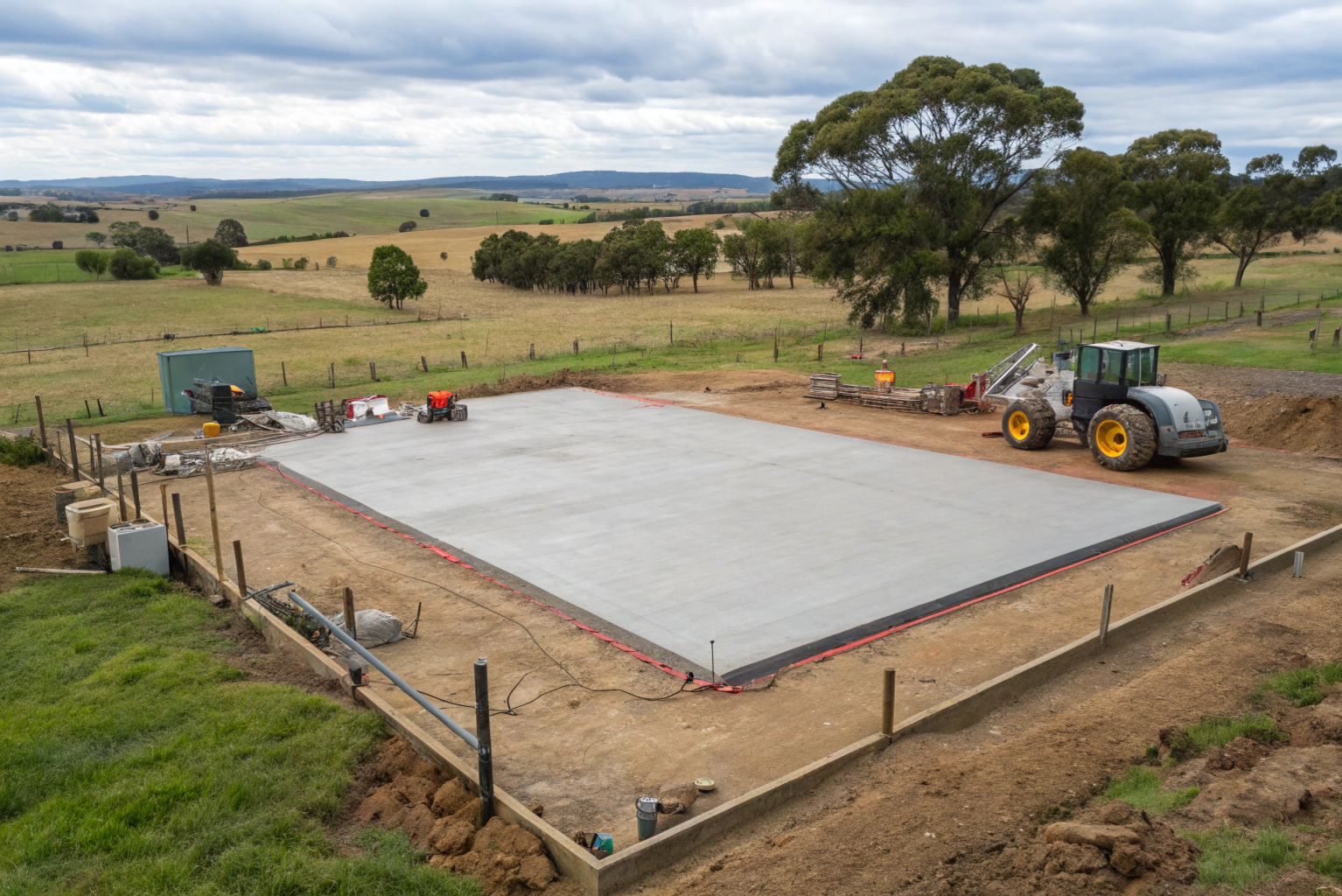
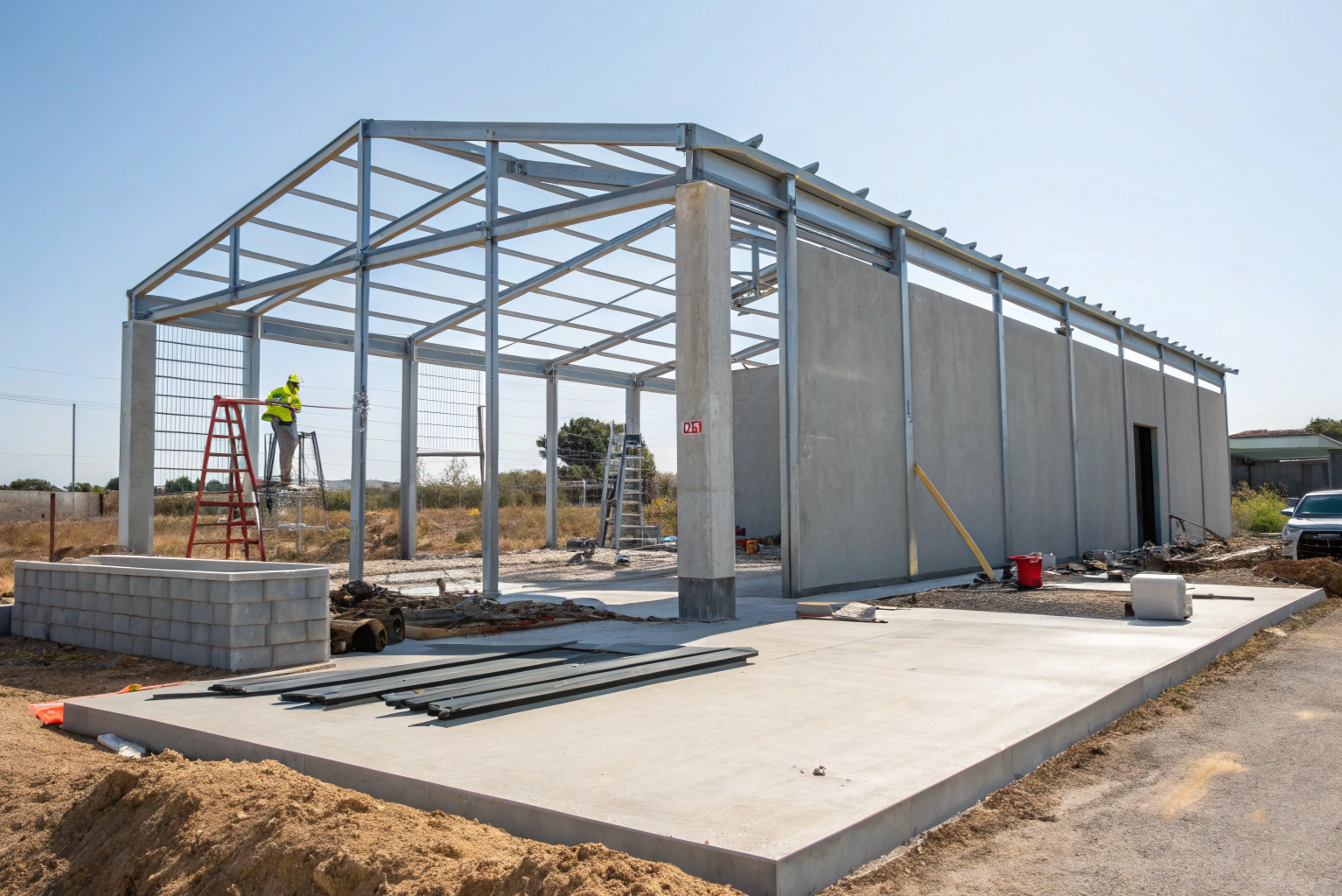
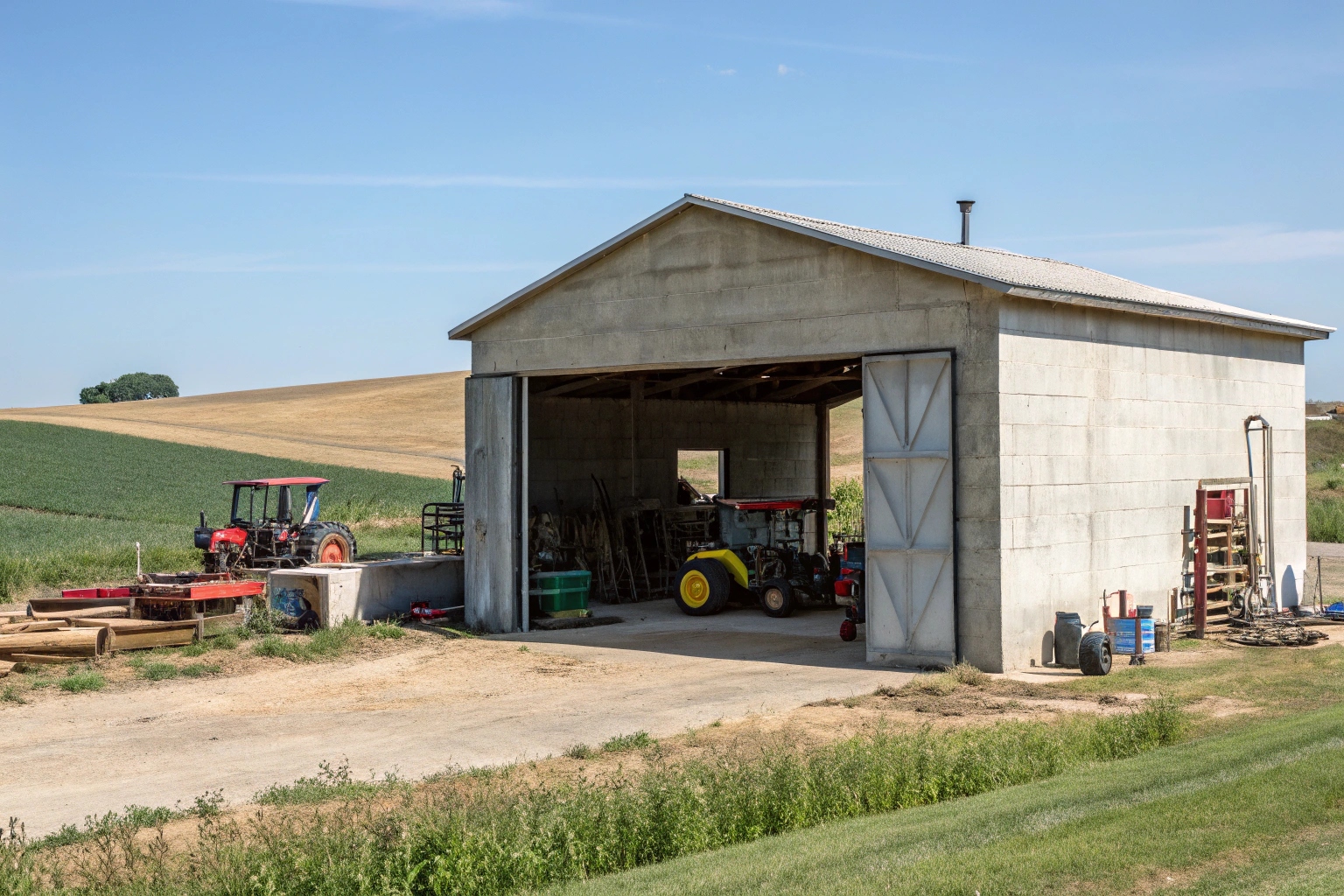


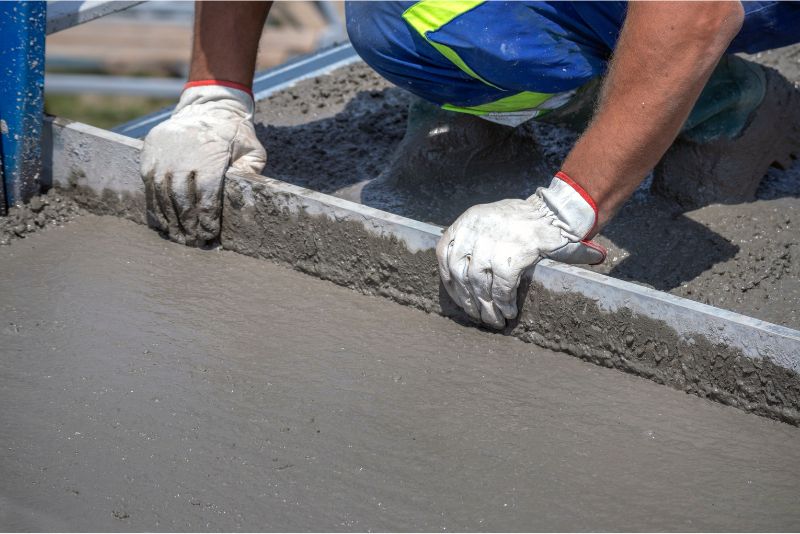
Maintenance and Durability
Concrete’s low maintenance, but it’s not maintenance-free:
Chemical resistance matters for farm applications. Fertilisers, herbicides, and fuels – these can damage concrete over time. Proper mix design and sealing help protect against chemical attack.
Oil and fuel stain resistance comes from sealing your slab after it’s cured. Unsealed concrete absorbs stains that are almost impossible to remove. A good sealer stops this from happening.
Crack prevention and repair start with proper construction. Control joints manage where cracks happen. If cracks do appear outside the joints, we can repair them before they get worse.
Sealing and protection needs redoing every few years, depending on use. It’s cheap insurance against staining and chemical damage.
Heavy load performance depends on correct specification from the start. A properly engineered slab handles the design loads without issues. Overload it and you’ll have problems.
Weather protection benefits are part of why you’re building a shed in the first place. Your concrete slab keeps everything off the ground, protected from moisture, and provides a stable base, whatever the weather’s doing outside.
FAQs
Most residential shed slabs are 100mm thick with standard mesh reinforcement. If you’re parking vehicles or storing heavy equipment, we’ll go thicker – usually 125-150mm with heavier reinforcement. Farm machinery sheds often need 150-200mm, depending on the loads involved.
Concrete takes 28 days to reach full strength, but you can usually start building your shed after 7 days in good weather. Light foot traffic’s fine after 24-48 hours. We’ll tell you exactly when it’s safe to start based on conditions during the pour and cure.
Autumn and spring work well around Maryborough – not too hot, less chance of rain interrupting the pour. We can work year-round, though. Summer pours need extra care with curing. Wet season means watching the weather forecast closely and being flexible with scheduling.
Yes, but it involves more site preparation. We either cut into the slope to create a level pad or build up the low side with compacted fill. Sometimes a combination of both. Sloping sites cost more due to the extra earthworks, but it’s definitely doable.
We excavate topsoil and unstable material, then bring in crushed rock or road base. This gets compacted in layers to create a stable foundation. Thickness depends on your existing soil – sandy soils need less, clay soils often need more. Proper compaction’s critical for preventing settlement.
Ready to Start Your Shed Slab Project?
Getting your shed slab sorted properly means you’ve got a foundation that’ll last decades without problems. No settling, no cracking, no regrets about cutting corners to save a few dollars upfront.
We’re pouring shed slabs across Maryborough and the Fraser Coast every week. Residential backyards, rural properties, commercial sites – we handle them all with the same attention to proper site prep, correct reinforcement, and quality concrete work.

